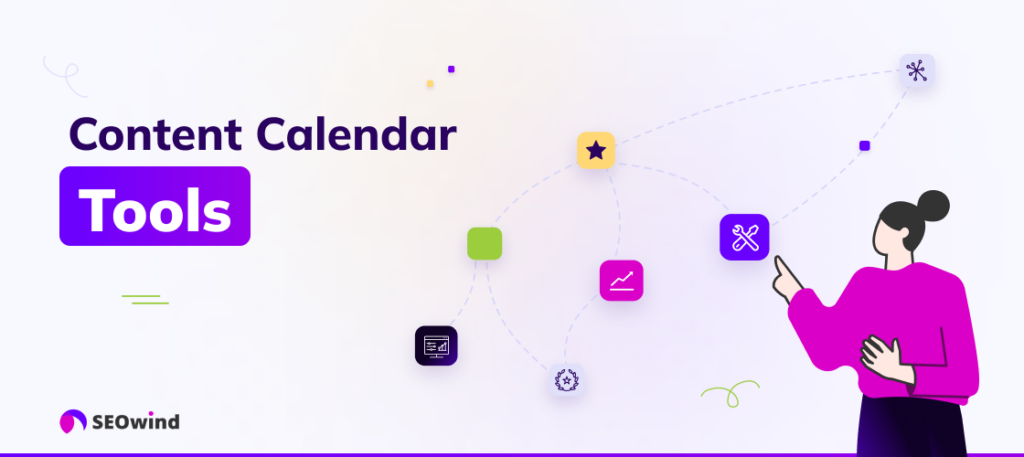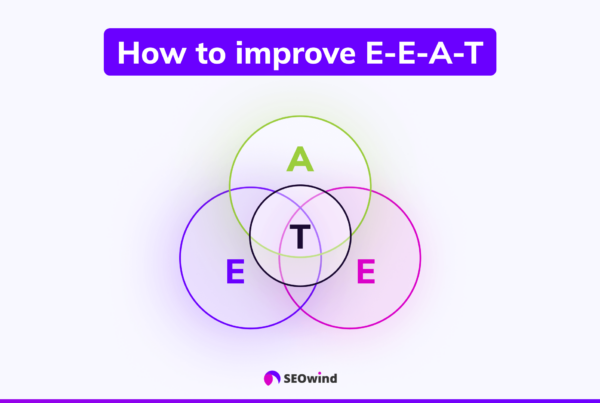An organized execution of content strategy is critical for any business aiming to stay ahead in the digital marketing game. Have you struggled to maintain a consistent posting schedule or grappled with last-minute content creation? Fret not, as this article will provide you with the ultimate guide on creating a content calendar – a must-have tool for anyone looking to streamline their content marketing efforts. Let’s dive into the world of content calendars and unveil their benefits, best practices, and how they could work wonders in your overall marketing strategy.
What is a Content Calendar?

A content calendar, an editorial calendar, or a publishing schedule is essentially a roadmap that outlines the “what, when, and where” of your upcoming content projects. This organizational tool helps businesses plan and manage their online presence across various platforms—including blogs, social media platforms, email newsletters, podcasts, and videos. It ensures the timely delivery of relevant and engaging materials for its target audience.
Content calendars can be tailored to fit your needs by choosing between digital or physical formats (think Google Sheets versus printed binders), integrating preferred project management tools (like Trello or Asana), and customizing templates that align best with your goals and strategies.
A well-planned content calendar becomes indispensable for marketers aiming to increase brand awareness and fuel engagement from their followers while keeping track of essential metrics—all without breaking a sweat at pressing deadlines or scrambling for fresh ideas.
What is a Social Media Content Calendar?
A social media calendar (or social media planning calendar) is an essential tool that helps you plan, organize, and execute your social media content strategy efficiently. It allows you to visualize all your planned content across multiple platforms at once – think Facebook, LinkedIn, and Twitter – while keeping track of publication dates, key events or promotions, creative assets such as images or videos, and any relevant hashtags or links.
Not only does having a detailed social media editorial calendar enables you to stay ahead by ensuring that you always have high-quality content scheduled for publishing when it matters most. It also empowers you to establish consistency in both frequency and style of posts. In short: without a proper organization through a planning process that supports consistent posting habits and regular reports on effectiveness—your efforts won’t get noticed!
Benefits of Using a Content Calendar

Creating a content calendar is an efficient way to manage your content and streamline your marketing efforts. As you learn how to create a content calendar, it’s essential to understand the benefits associated with implementing one in your organization. Look closely at four key advantages: time management, consistent posting, quality assurance, and improved collaboration.
Time Management
A well-organized content calendar can significantly improve time management by providing the following:
- A clear overview of all planned content.
- Deadlines for writing, editing, and publishing.
- The accountability needed to complete tasks on schedule.
With this comprehensive view of your editorial plan, you can work more efficiently and allocate resources effectively.
Consistent Posting
Consistency is crucial for building an audience and maintaining engagement. By using a content calendar, you ensure that:
- Your posts are published regularly
- You hold a strong presence across multiple channels
- There’s a balance between different types of content (e.g., blog posts, case studies, infographics)
When creating a content calendar, set up recurring deadlines to ensure consistency in posting across all platforms.
Quality Assurance
Implementing a content calendar helps maintain quality in the following ways:
- Content planning: Lay out ideas ahead of time to align with your objectives and target audience needs.
- Review cycles: Involve other team members or stakeholders in evaluating drafts before publication.
- Approval processes: Set checkpoints where necessary approvals must be obtained before proceeding.
Incorporating these steps will allow ample time for revisions as needed while still adhering to deadlines and reducing last-minute scrambles.
Improved Collaboration
Developing effective communication is at the heart of successful teamwork. A content calendar makes collaboration simpler because it:
- Provides transparency by showing who is responsible for each task or piece of content
- Facilitates sharing and discussing ideas
- Streamlines processes by establishing transparent workflows between team members
By adopting a content calendar, your organization will see the efficient and integrated collaboration that leads to higher-quality content outputs.
How to Create a Content Calendar
Creating a content calendar can be broken down into three essential steps: building your template, planning your content, and publishing it. A straightforward process combined with consistent use of relevant keywords will make the article more engaging for the reader.
1. Build Your Template
While constructing a content calendar, the first step is to create a suitable template that helps you stay organized and track vital information such as publication dates, channels, titles, and status updates. Here’s how to build a content calendar:
- Choose a platform: Pick an interface where you’ll design your template. This could be on paper or using digital platforms like Google Sheets or Microsoft Excel.
- Set up columns: Organize progression by creating labels such as date, channel, topic/title, description, status (e.g., ‘draft,’ ‘pending approval,’ ‘published’), and any additional notes.
- Incorporate color-coding: Utilize colors for categorizing types (e.g., blog posts, social media updates) or priority levels to visualize patterns better.
- Make it adjustable: Ensure your design leaves room for changing priorities.
Remember to select a template format that best suits your needs but remains easy to adapt as new challenges arise.
2. Plan Your Content
Once you have built your content creation calendar template, managing tasks become more straightforward. The next step involves populating it with compelling materials for different channels:
- Conduct research: Delve into current trends or analyze competitor activity surrounding various topics related to your niche.
- Understand your target audience: Remember their preferences and characteristics while determining what kind of content they would find valuable.
- Decide on frequency and time frames: Assess the optimal consistency required for posting across various platforms, ensuring regular engagement while avoiding overwhelming followers.
- Brainstorm ideas and fill out topics: Note potential themes within the context of available resources; including keyword-rich titles often helps facilitate finding topics.
- Allocate responsibilities: Assign and share tasks with your team members, ensuring a clear understanding of respective roles.
Effective content planning addresses the defined strategy and aligns brand goals with the target audience’s expectations.
3. Publish Your Content
The final stage is to ensure seamless publication and oversee its performance:
- Stick to deadlines: Adhere to scheduled dates while being mindful that unforeseen obstacles may arise, but try to publish consistently.
- Optimize posts: Use best practices for each platform, such as incorporating eye-catching visuals or employing keywords relevant to search engines.
- Cross-promote content: Share information across multiple channels to extend reach. Consider tailoring material according to varying channel audiences.
- Evaluate results: Monitor engagement metrics like views, clicks, shares, and comments regularly. By keeping track of these insights, you can make better-informed decisions regarding future content planning.
Mastering creating a content calendar is an essential aspect of a successful marketing strategy. Incorporating templates alongside proactive preparation ensures a balanced distribution of quality materials across various digital channels. Analyzing their impact further contributes to refining prospects within this domain.
How to Create and Manage a Social Media Content Calendar

Creating a social media content calendar is an essential step in streamlining your social media marketing efforts, ensuring consistency, and maximizing engagement. Follow these six tips to build an effective social media planning calendar that meets your business needs and objectives.
1. Identify Your Social Media Channels
The first step in creating a social media content calendar template is identifying the platforms on which you plan to publish content, such as:
- YouTube
Consider where your target audience is most active and concentrate your efforts on those networks that will drive the highest return on investment (ROI). Diversifying across multiple channels can help expand the reach and capitalize on platform-specific features.
2. Conduct an Audit of Your Social Platforms
Before diving into managing your social media editorial calendar, take time to audit existing accounts. Analyze performance metrics like engagement rates, follower counts, impressions, and conversions to determine what works well for your brand.
Pay close attention to top-performing social posts – consider their format (e.g., images, videos), messaging style (informative or light-hearted), and content themes. These insights can inform future content creation.
Additionally, evaluate any past challenges or bottlenecks inhibiting success so you may address them proactively moving forward.
3. Decide What You Want to Track With Your Social Media Calendar
Once you’ve identified the most suitable platforms and assessed their performance with an audit, decide what data should be tracked within your social media content calendar. Some useful information includes:
- Posting dates/times
- Platform-specific post URLs
- Post copy or captions/descriptions
- Visual assets (photos/videos)
- Post type/category (promo, knowledge-sharing)
- Engagement metrics (likes/comments/shares)
By capturing these details in an organized manner, evaluating the effectiveness of campaigns and identifying areas for improvement becomes seamless.
4. Plan Your Posting Cadence
Consistency is crucial in building trust, establishing brand authority, and maintaining a strong online social media presence. Determine an appropriate posting frequency for each platform based on the following factors:
- Audience preferences (when they are active)
- Platform algorithms’ optimal posting frequencies
- How much high-quality, relevant content you can feasibly produce regularly
Be intentional with your posts; it’s better to deliver fewer, high-quality updates rather than inundate audiences with low-value content.
5. Build Out a Review Schedule
To ensure consistency between posts and adherence to branding guidelines, devise a review schedule as part of your social media content calendar management process. This may involve:
- Assigning colleagues or team members to review upcoming content
- Scheduling internal check-ins prior to publication dates
The aim is to catch potential discrepancies early—preventing possible reputational damage while minimizing the need for corrections post-publication.
6. Track and Report on Published Content
Lastly, refine your efforts by monitoring their performance through regular evaluations of the published content. Analyze key metrics like engagement rates or conversions originating from specific social media activities within specified time frames (weekly/monthly/quarterly).
Use this data-driven approach not only to showcase success but also identify areas where particular tactics have room for enhancement. Iterate this learning-back process into your social media strategy and planning calendar continually for stronger results over time.
Also, consider sharing insights with broader teams—encouraging information exchange that improves cross-functional collaboration and elevates business outcomes.
Content Calendar Tools and Templates

Crafting the perfect content calendar requires not only strategic thinking but also making use of the right tools. Many organizations utilize online tools to streamline their content planning process – from brainstorming ideas to collaboration and publishing management. This section will discuss popular tools to help you effectively create a content calendar.
Google Sheets
Google Sheets is a powerful and versatile tool for creating a content calendar. Its real-time collaboration features enable team members to access information to plan and manage content effectively and quickly. Here’s how you can use Google Sheets to create a content calendar:
- Use templates: Find pre-built templates designed specifically for content calendars or customize your own.
- Share access with team members: Collaborate in real-time by inviting colleagues to view, comment, or edit the document.
- Add comments and reminders: Keep track of projects by leaving notes within cells.
- Sync data within sheets: Use formula-driven solutions for tracking performance analytics or assigning tasks automatically.
WordPress Editorial Calendar
For those who run blogs on WordPress, the WordPress Editorial Calendar plugin offers an intuitive approach to managing blog posts through its drag-and-drop interface. Some key features include:
- View articles in a calendar layout: See all scheduled drafts at-a-glance along with their statuses.
- Customize workflow status labels: Edit labels according to your preferred phases (i.e., draft, reviewed, ready-to-publish).
- Schedule new posts quickly: Create and schedule drafts directly within the plugin’s interface.
Semrush Marketing Calendar
Semrush Marketing Calendar is explicitly designed for marketing teams looking to plan campaigns across different channels simultaneously. It covers several aspects of digital marketing while providing valuable insights – notably ideal when integrating paid media campaigns into your strategy. The main benefits include the following:
- Comprehensive campaign planning: Organize editorial plans alongside other marketing efforts (PPC, social media) based on topics and dates.
- Detailed analytical insights: Receive data-backed suggestions for optimization and better decision-making.
- Cross-channel synchronization: Integrate with other Semrush tools to cover every aspect of digital marketing management.
Trello
Trello is popular among marketers due to its visual layout promoting smooth workflow. With countless integrations available, an agile project management approach suits teams focused on flexibility when creating a content calendar:
- Create boards and lists: Arrange cards per column based on various stages (ideas, approved, scheduled, published) to visualize your pipeline.
- Assign team members tasks: Add collaborators and assign them specific items so everyone knows their responsibilities.
- Automate processes using Butler: Design custom workflows through rule-based triggers to shift cards between stages automatically once completed.
Notion
Notion provides versatility, including functions spanning databases, pages, calendars, and task lists for content calendar planning. Its ability to create unique communication hubs within the platform offers benefits such as:
- Centralize workspace: Consolidate all aspects of content creation under one umbrella – research notes, ideas backlog, drafts review space, etc.
- Build custom tables and views: Leverage built-in templates or create from scratch tailored views (gallery view for visual projects).
- Content templates: Speed up editorial approval by implementing uniform standards across team-created pages or resources.
Asana
Asana’s project management powerhouse has earned its reputation as a preferred choice among businesses for managing large-scale efforts. When aiming to create comprehensive content strategies comprising different channels or teams – especially involving guest contributions – consider features it offers, such as task assignment, deadline tracking, and progress visualization. Asana’s calendar view lets you quickly see upcoming deadlines and scheduled content, enabling seamless coordination between team members.
Strategy Behind Your Content Calendar

A well-crafted content calendar can be a game-changer for your marketing efforts. But before diving into how to create a content calendar, it’s crucial to understand the strategy that supports it. This entails comprehending your target audience, conducting a content audit, and setting goals to define your approach.
Understand Your Target Audience
To produce relevant and engaging content for your audience, you must first grasp their preferences, needs, and challenges. Here are some steps to guide you in understanding your target audience:
- Identify demographics: Collect data on age, gender, location, income level, education level, marital status, and occupation of your ideal customers.
- Analyze psychographics: Gain insights about values, interests, lifestyles, decision-making factors, pain points, or challenges they face.
- Map customer journey stages: Enumerate the different phases of interaction with your brand (awareness stage: encounter with your products or services; exploration phase: research more about what you offer; decision-making stage: choose between various options).
Understanding who your audience is and what they care about most while making decisions during each stage of their journey will help you tailor compelling content that resonates with them.
Perform a Content Audit
Conducting a content audit allows you to assess the current state of existing materials to identify gaps and opportunities. It comprises evaluating elements like quality metrics (engagement rates), technical aspects (ease of access), relevance (audience targeting), and consistency (brand voice). To carry out an effective audit:
- Create an inventory: Make a comprehensive list of all published content – blog posts, videos, articles – across platforms.
- Categorize contents: Arrange similar items based on topics/themes such as product features or industry trends.
- Analyze performance indicators: Inspect website analytics tools like Google Analytics to compare performance metrics (visitor traffic or the number of shares).
- Identify strengths and weaknesses: Determine which content assets performed well, had a low engagement, or deviated from brand guidelines.
A thorough social media audit also will reveal valuable insights that inform your content marketing strategy.
Set Goals and Define Strategy
Establishing specific goals and defining a well-rounded strategy set a solid foundation for creating a content calendar:
- Define SMART goals: Specific, Measurable, Achievable, Relevant, and Time-bound objectives guide crafting the right content.
- Align with business objectives: Ensure your content goals complement broader company goals, such as enhancing brand awareness or boosting revenue growth.
- Set key performance indicators (KPIs): Select relevant KPIs to periodically measure progress towards desired outcomes (click-through rates, conversion rates).
- Craft an editorial mission statement: An overarching statement reflecting upholding the audience’s interests helps maintain thematic coherence among varied topics.
- Adopt agile methodologies: Remain flexible – adjust your strategy based on new findings or changing market dynamics.
A clear understanding of these strategic elements will empower you to create a robust content calendar essential for success in your overall marketing campaign.
Filling Out the Content Calendar
Now that you know how to create a content calendar, it’s time to start populating it with content. This process is essential and helps ensure your content strategy remains organized and well-mapped. There are various elements to consider when filling out your content creation calendar, such as theme, target audience, type of content, publishing dates, and more.
Define Themes or Categories
First, determine the overarching themes or categories your content marketing efforts cover. These could be based on your products or services, audience problems, industry news, updates, or seasonal trends. Assigning themes to specific weeks or months on your blog content calendar template provides structure and context for you and your other marketing team members.
- General: Company announcements
- Seasonal: Holiday promotions
- Industry-specific: Latest technology innovations
- How-to articles
- Expert interviews and case studies
- Guest posts from thought leaders
Schedule Publish Dates
After identifying the topics, you’d like to tackle, allocate appropriate deadlines for each piece of work – including drafts, revisions, and final approvals. Set realistic expectations regarding productivity among collaborators involved along every stage from ideation to publication date itself! It’s important not just to ensure consistency but also to meet audience demand.
Keep Your Target Audience in Mind
When planning what a content calendar should include, always keep your target audience in mind. Conduct thorough research on their preferences and interests by:
- engaging continuously with them via social media platforms,
- reading up about relevant case studies published elsewhere online,
- Anything which might help hone an understanding surrounding habits they share collectively concerning topic matter readership might appreciate most!
Use language that resonates with this group, especially while talking indirectly through written pieces.
Diversify Content Formats
Feel free to infuse various formats and structures across the content calendar planning. Mixing blog posts with videos, infographics, webinars, or podcasts can help maintain audience interest while catering to various learning preferences. Switching between long-form articles and short, quickly digestible content helps boost engagement within your content creation calendar template.
Content Ideas and Inspiration Sources

Coming up with new and fresh content ideas regularly can be challenging. When creating a content calendar, finding reliable sources of inspiration is essential to keep your content engaging and relevant for your audience. In this section, I will discuss some practical methods you can use to gather content ideas and ensure that your calendar remains interesting.
Analyze Your Competitors
One of the best ways to generate new ideas is by analyzing what your competitors are doing. Keep an eye on their blogs, social media channels, and email newsletters to see which topics they cover and how they resonate with their audience. This doesn’t mean copying them directly but using their successful strategies as an inspiration source for your unique takes.
Social Listening
Monitoring social media discussions around issues relevant to your industry can help you identify trends or concerns that could be potential topic ideas for upcoming posts. Tools like Hootsuite or Sprout Social allow you to set up alerts based on specific keywords to get all critical conversations within your niche.
Answer Audience Questions
Knowing what questions your target audience might have about your area of expertise is always helpful. Look through comments sections on blog posts and discussion boards, or use platforms like Quora and Reddit to discover popular queries related to your industry. By providing valuable answers through blog articles or social media updates, you’ll connect with potential customers and establish credibility as an expert within the community.
Conduct Keyword Research
Keyword research helps discover terms users frequently search for information about their business niche. Use tools such as Google Keyword Planner or Semrush Keyword Magic Tool to find out which phrases people search regularly and consider incorporating those into future content pieces.
Leverage Seasonal Events and Trends
Stay updated with seasonal events or contextual happenings related both globally and locally that can inspire relevant content. These timely topics will capture your audience’s attention and drive more traffic to your website, whether it’s holidays, major sports events, or cultural occurrences.
Brainstorming Sessions with Your Team
Hold regular brainstorming sessions with your team members and encourage them to share their thoughts on potential content ideas. Not only does it help generate new concepts for the content calendar, but it also fosters a creative environment where everyone feels comfortable contributing.
Never underestimate the power of staying informed about your industry and actively listening to your audience. By employing these tactics when seeking inspiration for your content calendar, you’ll create engaging material that generates meaningful conversations around your brand.
Analytics and Tracking Performance
Understanding the success of your content is essential for ensuring continued growth and development. Consequently, continuous tracking, analysis, and optimization of your content are crucial to managing a successful content calendar. Fortunately, numerous robust analytical tools are available to assist you in measuring performance indicators like engagement and conversions on various platforms.
Key Performance Indicators
Before diving into analytics, you must identify which key performance indicators (KPIs) matter most within your marketing efforts. Some common KPIs that can help determine the effectiveness of your content include:
- Social media engagement: likes, shares, comments
- Traffic sources: direct visits, organic search traffic, social media referrals
- Time spent on page
- Click-through rates
- Conversions/signups/subscriptions
- Bounce rate
Monitor these metrics across all platforms where your brand has a presence to get a holistic view of how well each piece performs.
Implementing Analytics Tools
When it comes to implementing analytics tools for tracking performance, here are several popular options worth considering:
- Google Analytics: Offering comprehensive website tracking data and insights on user behavior, demographics, acquisition channels, conversion paths, and more.
- Semrush: Provides valuable insights into keyword rankings and competitor analysis while offering its own Marketing Calendar tool that integrates seamlessly with its platform.
- Buffer Analyze or Sprout Social: Ideal for creators focusing heavily on social media. These tools display detailed reports highlighting message clicks, impressions/visibility over time by post type/platform, and other meaningful metrics regarding audience interactions.
- Content creation platforms like WordPress may already have built-in analytical tools to gauge post views/pattern details relative to date/time published; exploring those features often provides helpful pointers specific to one’s blog posting strategy.
Learning from Your Metrics
With careful attention to identified KPIs utilizing appropriate analytic instruments, you will begin to recognize patterns that tell you a compelling story about what resonates with your audience. By understanding how posting frequency/style/medium affects performance results relative to specific platforms/platform variations (e.g., video-centric content garners more YouTube attention), emerging trends often materialize, which help guide future decisions concerning clever content calendar construction.
Remember the importance of relating analytical findings to overarching organizational goals. Continuous sustainable growth follows suit when these two dimensions harmonize seamlessly within a content calendar.
Optimize and Adjust Your Strategy
Finally, use insights drawn from analytics data to optimize and refine your content schedule iteratively, adjusting it better aligns with objectives and evolving consumer behaviors/preferences. To achieve quality assets, align plans with feedback. Make sure never to neglect this vital aspect of managing an effective content calendar and see how powerful measurement-driven frameworks operate synergistically with strategic initiatives planned—all focused on maximizing returns derived from each piece shared across digital landscapes!
Social Media Channels to Consider
When creating a content calendar, one of the essential aspects to consider is the selection of social media channels. With numerous platforms available, it can be overwhelming to determine which ones are best suited for your content and target audience. To simplify this task, you need to identify the platform used by your audience and those offering features that align with your marketing goals.
Here are some popular social media channels worth considering:
- Facebook: Arguably the most popular platform globally, Facebook acts as an effective channel for various types of content, including text posts, images, videos, live streaming, events promotion, Stories, and more. When learning how to create a content calendar, remember that engaging on Facebook allows you to reach a vast and diverse audience.
- Instagram: This visual-focused platform is perfect for sharing aesthetic photos and short videos using Instagram Stories or IGTV (for longer videos). Instagram also supports shoppable tags making it ideal for eCommerce businesses or influencers promoting products.
- LinkedIn: As a professional networking site, LinkedIn mainly targets professionals and B2B marketers looking for industry insights and updates from thought leaders or companies. Content specific to individual skills would be well-received here, along with company news & updates too.
- Pinterest: This search-oriented platform requires eye-catching visuals accompanied by relevant information catering majorly towards design inspiration like DIY projects or recipes. Companies related to such industries could benefit massively from their presence on Pinterest.
- Twitter: For quick interactions and real-time conversations, Twitter stands out as the go-to option amongst all other alternatives satisfying different objectives such as public relations management, customer services branding discussion forums as well owing to its 280-character limit constraint.
- YouTube: As a video-centric platform boasting millions of active daily users, YouTube’s ability to captivate audiences makes a practical choice if you have the creativity and dedication to produce quality visual content. Extra efforts pay off in a massive increase in engagement awareness among viewers upon carefully considering regional and global market trends.
When deciding which social media channels to incorporate into your content calendar, evaluating your target audience and the types of content you plan to share is crucial. Choosing platforms that cater to your users’ preferences and suit your content strategy maximizes the reach, engagement, and conversion among online viewers. Remember that quality over quantity matters – focusing on a few platforms relevant to your objectives will yield better results than stretching yourself thin trying to accommodate all available channels.
Tips for Managing Multiple Social Media Posts and Accounts

Managing multiple social media accounts can be overwhelming, especially when creating a content calendar. Here are some tips on managing various social media accounts efficiently to help you stay organized and ensure your content maintains a consistent presence across all platforms.
1. Develop a Consistent Voice and Branding
To maintain professionalism and consistency across various platforms, develop a unified voice and branding for your business or personal account. This entails sticking to specific colors, fonts, style, tone of voice, and caption formats throughout the posts.
By doing so, they will recognize your brand’s content quickly and ensure that each post aligns with what is expected from your target audience.
2. Prioritize Your Channels
Identify which channels are most important to your goals — such as increasing website traffic or driving sales — and focus primarily on them when creating a content calendar. Allocate more time and resources toward these crucial platforms while keeping tabs on less critical channels without neglecting them completely.
3. Store Logins in One Place
Use a password manager or another secure method to store logins for all the social media platforms you manage in one easily accessible place. This will save time by not having to remember individual passwords or risk losing sensitive information due to disorganization.
4. Utilize Scheduling Tools
Many tools facilitate scheduling content for multiple social media accounts simultaneously; thus, consider using them to manage multiple accounts efficiently. Some popular content automation tools include Buffer, Hootsuite, and Sprout Social.
These tools allow you to schedule posts in advance across different platforms simultaneously and provide analytics on the performance of the published content so that you can easily track engagement metrics.
5. Keep Track of Each Platform’s Unique Features
Each social media platform has unique features that impact how audiences interact with and consume content. Understanding these specific user expectations and platform limitations will play a significant role in planning content effectively.
For example, Twitter has a 280-character limitation. At the same time, Instagram captions can be more extended than that but need to have visually appealing images. Familiarize yourself with the strengths and weaknesses of each platform to optimize your content strategy accordingly.
6. Collaborate With Your Team
When managing multiple social media accounts, collaboration with your team is vital. Assign team members’ tasks based on their skills or expertise – some individuals may excel in graphic design. In contrast, others possess excellent written communication abilities.
Regular meetings should be conducted to discuss upcoming posts, writing processes, and overall execution plan for collaboratively organizing a successful content calendar.
7. Align with Your Marketing Goals
Ensuring that the content you’re planning aligns with your overall marketing objectives is essential when creating a content calendar. Start by listing your key goals and strategizing how each piece of content contributes to achieving them by driving engagement, conversions, or brand awareness.
8. Maintain Balance Between Themes and Formats
Your audience may appreciate diverse information and formats, so aim for variety in your content planning. Create a mix of themes relevant to your industry and use various forms such as blog posts, infographics, videos, or podcasts to address consumer needs effectively.
9. Prioritize Consistency Across All Channels
Once you’ve determined which social media channels to utilize based on their relevance to your target audience, prioritize consistency in posting schedules across all platforms. This practice keeps your followers engaged and helps establish a cohesive brand image.
10. Utilize Content Repurposing Strategically
Repurposing existing high-performing pieces of content is an excellent way to maximize your efforts while reducing time spent brainstorming new ideas. For instance, convert blog posts into shareable infographics or podcast scripts while maintaining their original messages intact.
11. Plan for Seasonal Events and Industry Trends
Stay ahead of the curve by scheduling seasonal events or trending topics throughout the year as part of your “how to create a content calendar” strategy. By doing so, you cater directly to engaging updates and pertinent moments, increasing the chances of grabbing potential customers’ attention and leading to higher engagement rates and possible sales connections with niche community members. Are any relevant national/international days per month that could be incorporated into the plan
12. Incorporate Flexibility for Real-Time Adjustments
It’s crucial to be agile when necessary. Allocate some slots within your content calendar for real-time adjustments or shifts in strategy, responding to timely circumstances and breaking news aligning with higher-level business changes.
Following these tips for managing multiple social media accounts when creating a content calendar makes it easier to maintain consistency and quality across platforms — ultimately contributing to your brand’s online presence growth.
Content Automation Tools
Efficiency is key. Utilizing content automation tools can significantly enhance your content calendar management and streamline the tasks involved in the process. These tools not only save time but can also improve the accuracy and consistency of your content strategy. In this section, we will explore a few popular content automation tools to help you optimize how to create a content calendar.
- Buffer: Buffer is a social media scheduling tool that allows you to plan and publish posts across different platforms easily. Its intuitive interface allows for quick scheduling while providing valuable insights and analytics on post-performance.
- Hootsuite: Hootsuite is another powerful social media management platform that lets you schedule, monitor, and engage with your audience from one place. It supports integration with various platforms to streamline your social media efforts.
- Sprout Social: Sprout Social offers advanced features for social media scheduling, engagement tracking, and data-driven insights. The platform helps refine your content strategy by providing customizable reports about your posting frequency, engagement rates, and overall performance.
- CoSchedule: Specially designed for creating a content calendar, CoSchedule simplifies organizing, planning, and publishing blog posts or articles through its easy-to-use drag-and-drop interface. It also integrates well with other tools like Google Analytics and WordPress.
- IFTTT (If This Then That): A unique automation tool allowing users to create “applets” connecting different applications or services. With IFTTT, you can automate repetitive tasks like sharing new blog posts on social media platforms or sending updates via email whenever new content is published.
When selecting an appropriate content automation tool, consider factors such as compatibility with existing systems; ease of use; support for multiple platforms; scalability; pricing models; reviews/testimonials from customers; customer service quality; security measures; required training/support/resource investment needed for implementation.
By leveraging these tools, you can ensure your content calendar stays organized and up-to-date while freeing up time for other essential tasks. Moreover, incorporating automation allows your team to focus more on creative work instead of tedious scheduling activities. Make sure to explore different tools and identify which option fits best with your specific needs and requirements as you set out to create a content calendar.


